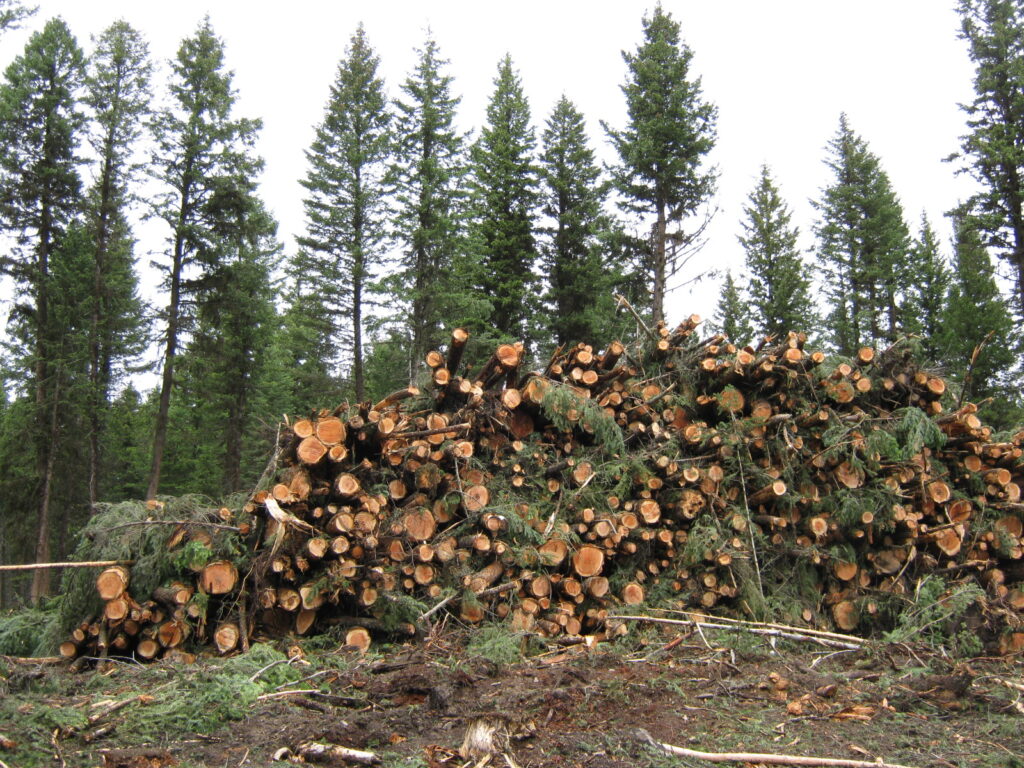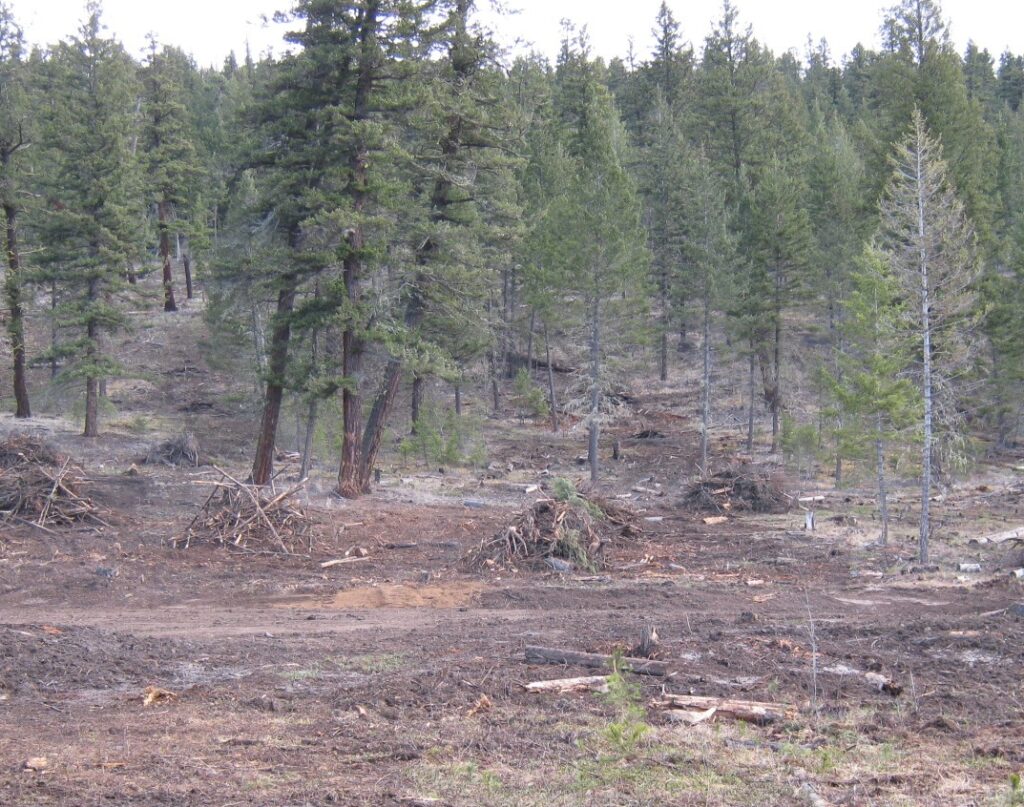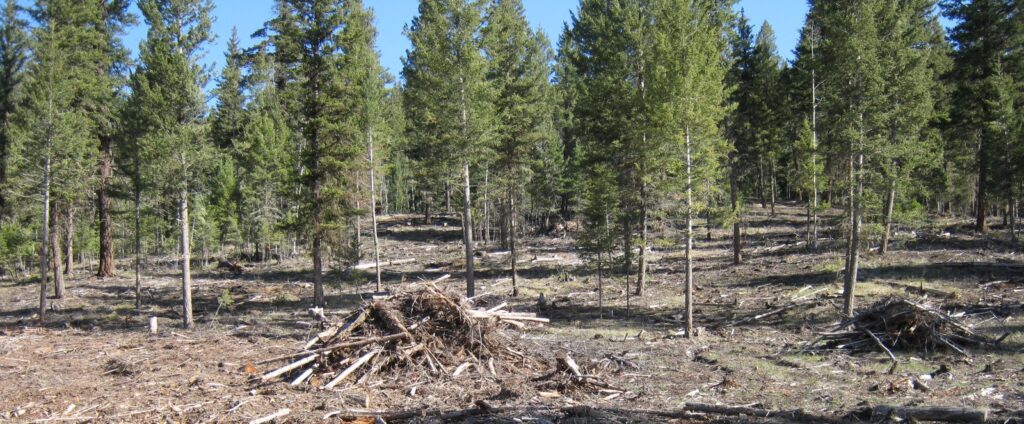A partnership between the Forest Enhancement Society of BC (FESBC) and 100 Mile House Development Corporation is reducing the risk of wildfires for people living in and around 100 Mile House.
Manual and machine clearing of forested areas for fuel breaks is focused on neighbourhoods and areas near the community, with the goal of reducing wildfire risk to homes and recreational areas.
“This partnership is supporting the economy by creating opportunities for people from local communities, including the Canim Lake Band, as well as local contractors,” said Doug Donaldson, Minister of Forests, Lands, Natural Resource Operations and Rural Development. “It’s also benefiting people living in and near 100 Mile House, and all British Columbians, by reducing wildfire risk.”
The project is contributing to an estimated 10 full-time jobs and is providing opportunities for local contract work. It includes machine and hand clearing, as well as prescribed burns.

Log deck – 100 Mile 
Post Harvest 
Final Decking Pile Clean-up 
Debris Piles with 6 m Crown Gap on Trees
“People are facing the risks connected to climate change and preparing their communities to respond. Reducing the risk of wildfires is one of the actions communities can take to safeguard public health and safety,” said George Heyman, Minister of Environment and Climate Change Strategy. “This project and others like it create opportunity and provide jobs through economic recovery from COVID-19.”
FESBC funding of nearly $1.3 million in 2019 has allowed the corporation to clear close to 240 hectares since the project began last fall.
“The contractor is working with experienced crews from local First Nations communities, and with the slowing of the local forest economy, they also employed laid-off loggers,” said Joanne Doddridge, director of economic development and planning, District of 100 Mile House. “The public has been, overall, supportive. The development corporation is aware of the impact of implementing the treatments so close to residences. We are striving to minimize the impact on these neighbourhoods, while creating fuel breaks to enhance public safety and reduce wildfire risk.”
Much of 2019 was spent doing mechanical harvesting and piling treatments, followed by manual work where crews prune trees, thin out small stems and pile debris. This summer, crews laid out areas for prescribed burns and prepared for mechanical clearing. Manual treatment options may be delayed due to COVID-19 related restrictions.
Activities for this field season will take place north and south of Horse Lake. Work will also include the completion of activities in areas treated last fall east of 100 Mile and properties on the north side of Horse Lake Road and the Ranchette subdivision.
It is hoped that material removed this year to create the fuel breaks can be used as biomass in the form of pulp or ground for pellets, minimizing the amount of material that needs to be burned. All the pulp fibre and a significant portion of the residual fibre removed last year was used.
The project is expected to continue through March 2022.
“This project has been innovative in maximizing the use of mechanical treatments, which reduces overall costs and allows more area to be treated. The success of this project has been due to the collaborative efforts of all the parties involved to achieve a successful outcome.”
Ray Raatz, Operations Manager, Forest Enhancement Society of BC
“Funding from FESBC has been critical in all phases of this project. Assessing, developing prescriptions and treating these fuel treatment blocks to enhance community safety would not be possible without the assistance of FESBC.”
Mitch Campsall, mayor of 100 Mile House
To learn more, visit the BC Government website, here or the FESBC projects pages: www.fesbc.ca/projects
